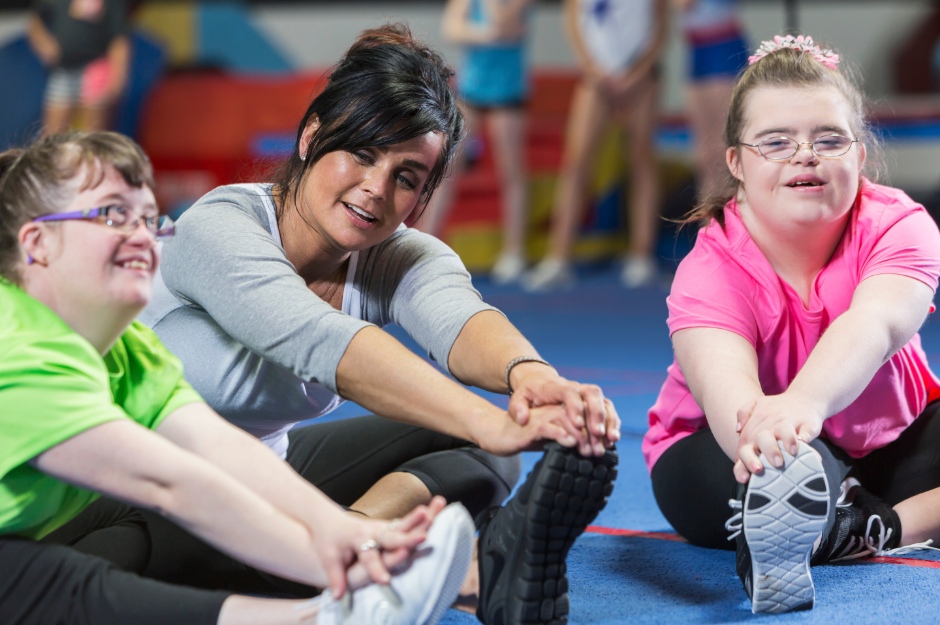September is National Yoga Month
Back in the 1960s, yoga was associated with flower power, pot smoking, and the hippie lifestyle. It was seen as avant-garde, something unusual, bohemian, and freewheeling. Today, however, there is a yoga studio on every corner and your mother probably practices it.
BUT WHAT IS YOGA, EXACTLY?
Yoga is an ancient practice involving physical, mental, and spiritual aspects that began in the East and has been passed down from teachers to students over centuries. Yoga involves physical poses and flow, breathing techniques, sometimes chanting, and meditation. Many types of yoga exist, but hatha yoga is the style most practiced in the United States.
WHY HAS YOGA BECOME SO MAINSTREAM?
Modern society is looking for peace and connectedness. With the decline in those attending regular religious services with the majority of the population seeking a deeper spiritual life, yoga’s increased popularity makes sense. In addition, science and research have uncovered the benefits of yoga through randomized controlled trial studies. Johns Hopkins University reports the following 9 benefits of yoga practice:
-
Yoga improves strength, balance, and flexibility.
Slow movements and deep breathing increase blood flow and warm up muscles while holding a pose can build strength.
-
Yoga helps with back pain relief.
Yoga is as good as basic stretching for easing pain and improving mobility in people with lower back pain. The American College of Physicians recommends yoga as a first-line treatment for chronic low back pain.
-
Yoga can ease arthritis symptoms.
Gentle yoga has been shown to ease some of the discomfort of tender, swollen joints for people with arthritis, according to a Johns Hopkins review of 11 recent studies.
-
Yoga benefits heart health.
Regular yoga practice may reduce levels of stress and body-wide inflammation, contributing to healthier hearts. Several of the factors contributing to heart disease, including high blood pressure and excess weight, can also be addressed through yoga.
-
Yoga relaxes you, to help you sleep better.
Research shows that a consistent bedtime yoga routine can help you get in the right mindset and prepare your body to fall asleep and stay asleep.
-
Yoga can mean more energy and brighter moods.
You may feel increased mental and physical energy, a boost in alertness and enthusiasm, and fewer negative feelings after getting into a routine of practicing yoga.
-
Yoga helps you manage stress.
According to the National Institutes of Health, scientific evidence shows that yoga supports stress management, mental health, mindfulness, healthy eating, weight loss, and quality sleep.
-
Yoga connects you with a supportive community.
Participating in yoga classes can ease loneliness and provide an environment for group healing and support. Even during one-on-one sessions loneliness is reduced as one is acknowledged as a unique individual, being listened to and participating in creating a personalized yoga plan.
-
Yoga promotes better self-care.
The U.S. military, the National Institutes of Health, and other large organizations are listening to — and incorporating — scientific validation of yoga’s value in health care.
Numerous studies show yoga’s benefits in arthritis, osteopenia, balance issues, oncology, women’s health, chronic pain, and other specialties.
See https://www.hopkinsmedicine.org/health/wellness-and-prevention/9-benefits-of-yoga
Yoga deserves a place in treating and maintaining those with special needs.
An article from the University of California, Berkeley, delineates how schools are using yoga for students:
-
Emotion regulation
For students to succeed at school and in life, they must develop self-regulation skills: the ability to monitor and adapt their behavior, attention, and emotions in response to internal cues, the environment, and feedback from others. And research suggests that school-based yoga may benefit students’ self-regulation.
For example, a randomized controlled trial of 37 high school students found that doing 40 minutes of yoga three times per week for 16 weeks significantly improved their ability to regulate their emotions, compared to participating in a standard physical education (PE) class.
In addition, another study of 142 sixth-graders compared students who performed four minutes of mindful yoga at the beginning of their English Language Arts (ELA) classes over an entire school year to students who received regular ELA classes that included a few short discussions about mindfulness (but no mindful yoga). The results showed that this mindful yoga program also led to increases in self-regulation, according to student questionnaires.
-
Academic performance
Most schools use academic performance as the primary criterion for student success. Unfortunately, many students struggle to achieve or maintain adequate grades, which can lead them to disengage or drop out. However, research suggests that yoga might improve attention and memory and alleviate academic stress, three factors that are important for academic success.
School-based yoga might also improve students’ grades. For example, one study randomly assigned 112 high school students to participate in either yoga or PE twice per week for 45 minutes across the entire academic year. Among students who had high levels of participation, the yoga group ended up with a significantly higher grade point average (GPA) than the PE group.
Another similar randomized controlled trial assigned 95 high school students to participate in either a yoga program or a standard PE class. The study found that students who participated in the yoga program were able to maintain their GPA, whereas students in the PE group showed a decline in GPA during the 12-week program.
The authors write, “Yoga may improve academic performance by enhancing self-regulation which may, in turn, mitigate stress, thus leading to enhanced attention and learning.”
-
Reduced anxiety and tension
Children and adolescents are exposed to a variety of stressors at school and home. These stressors can range from extreme, chronic stress such as living through poverty or abuse, to relatively minor stressors such as test anxiety. Adolescents with unmanaged stress are at a higher risk for developing mental health issues such as anxiety disorders, which is why some researchers have explored whether school-based yoga might help reduce anxiety, tension, and stress.
One randomized controlled trial of 97 fourth- and fifth-graders assigned some students to participate in a mindful yoga program that met four days per week for 45 minutes. Compared to attending school as usual, 12 weeks of mindful yoga led to significant reductions in students’ problematic responses to stress, such as experiencing repetitive negative thoughts and strong, intrusive emotions.
A study of the Yoga 4 Classrooms program found that a group of 18 second-graders who participated for a half hour per week for 10 weeks showed a significant decrease in cortisol concentrations from before to after the program. Cortisol in our saliva tends to increase during stress, and heightened cortisol concentrations as a result of repeated stressors may be detrimental to our mental and physical health. This study provides preliminary evidence that school-based yoga might help mitigate these negative effects.
In addition, one study enrolled 49 inner-city high school students to participate in a semester-long yoga and mindfulness program several days per week, and students reported significant reductions in their anxiety. Another study randomly assigned 51 high school students to participate in either a 10-week yoga program or a PE group that met a few times per week. The study found that tension and anxiety worsened in the PE group but improved in the yoga group.
-
Resilience to stress
School-based yoga may also help students cope with negative life events, like troubles at home or getting a low grade in an important class. For example, a randomized controlled trial of 155 fourth- and fifth-graders assigned some students to participate in an eight-week mindful yoga program that met for one hour per week. The study found that the yoga program helped students cope more often with complex life events, compared to regular schooling.
Another study found that 30 elementary and middle school students who participated in a 10-week yoga program once or twice per week improved their resilience—the ability to successfully cope with challenging life events.
The authors concluded, “Yoga practice may increase the sense of control and self-efficacy concerning stress and emotion, thereby increasing resilience.”
-
Fewer problem behaviors
Bullying occurs quite regularly in schools; in 2011, approximately 28 percent of U.S. adolescents reported being bullied during the past school year. Bullying can lead to a variety of negative effects on students, including difficulties with academic performance. In addition, problem behaviors such as bullying often result in suspensions and disciplinary referrals, which means those students end up missing out on important academic material, too.
However, research suggests that yoga might help. For example, third- to fifth-grade students who participated in a 10-week yoga program for one hour per week reported bullying others less after the program.
Similarly, another study of 159 sixth- and ninth-grade students assigned some of them to a semester-long, yoga-based social-emotional wellness program several days per week for a half hour. The results revealed that students in the yoga group had fewer unexcused absences and detentions, and became more engaged in school, compared to students who went to school as usual.
These positive effects might be due to yoga-based improvements in students’ awareness of their emotions and behaviors. That might help students “control impulsive behaviors and negative reactions to meet situational demands and achieve personal goals,” the researchers explain.
-
Physical well-being
National surveys estimate that nearly one-third of youth in the United States are overweight or obese and that a lack of daily physical activity is a key factor at play. As a form of mindful movement, yoga is particularly well-suited to provide non-competitive, gentle ways for youth to engage in physical activity.
This 12-week study of 16 first-grade students who participated in 45 minutes of yoga twice per week found that yoga can improve motor abilities, including balance, strength, and flexibility. In addition, based on surveys from hundreds of parents, students, and PE teachers, another study found that a year-long program of yoga-based activities for 5-15 minutes per day improved students’ physical well-being, including their body posture, sleep quality, fatigue, and diet.
“Yoga appears to be simply a stretching activity, but the variety and sequencing of postures coupled with the practice of deep breathing creates an extremely diverse and effective method of enhancing a range of health-related fitness skills,” the authors write.
-
Teacher well-being and classroom climate
Advocates for school-based mindfulness programs suggest that the benefits of these programs might reach beyond students to impact classroom climate and teacher effectiveness. Preliminary research on yoga programs for educators suggests that yoga might also be good for teachers’ well-being.
For example, one study randomly assigned 64 educators to either participate in a 20-minute yoga and mindfulness program four days per week or go about their work as usual. The results revealed that the 16-week program helped educators improve their mindfulness, positive mood, classroom management, and physical symptoms, compared to regular work. These educators also showed improvements in blood pressure and cortisol.
Do you have questions about your child’s 504 Plan or IEP, or lack thereof? Feel free to call the attorneys at Sussan, Greenwald, & Wesler at 609-409-3500 to answer your questions.


